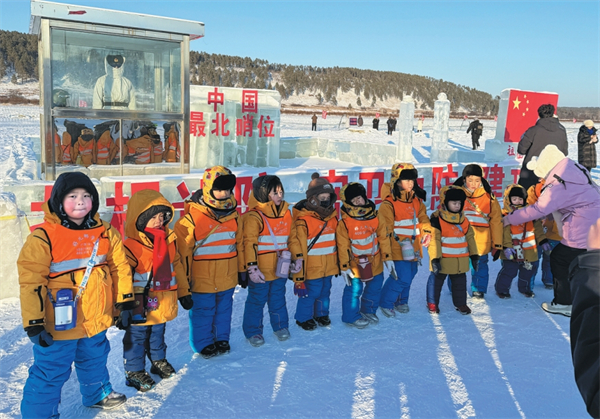Home>Harbin Today
Harbin train station wins top national architecture honor
Updated : 2019-12-18
By ( e.my399.com )
This prize is the highest honor for engineering quality in China's architecture profession.
Harbin railway station has undergone its fifth period renovation since 1955.
The latest reconstruction of the station started in March 2017 and ended at the end of 2019. It was a bid to improve the station’s facilities and restore the historical features of the station, when it was first established in 1899.
The renovation project of the Harbin Railway Station included construction of the south and north station buildings, elevated station buildings, underground city corridors, platforms and canopies. The whole station covers an area of around 165,385 square meters.
There are eight platforms and 16 rail lines in the station. It can handle up to 15,000 passengers at the same time. The annual passenger flow of the station is estimated to reach 37.6 million.
The new station is designed in the Art Nouveau style, and the overall shape of the north and south station buildings are based on the version of when it was first built.
The roof of the main station building incorporates the Monsa-style roof of the Heilongjiang Provincial Museum.
The mushroom-shaped windows of its bell tower integrate the classic shapes of many Art Nouveau buildings such as the Madier Hotel and the design of the bell tower borrows from London’s Big Ben.
The neo-artistic iron art that prevailed in Harbin in the early days is widely used in the awnings, corridors, railings, and elevators at the entrance of the station.
In addition, the huge relief sculpture in the departure hall integrates the elements of the railways, lilac and sprays, featuring clear regional characteristics and reflects Harbin’s historical development due to the appearance of the railway.

Harbin ramps up childcare services
A new comprehensive service center for childcare in Harbin is expected to be finished by the end of the year.
-
Talent policies drive enterprise development in Harbin
Harbin's "30 New Talent Policies" represents an iterative upgrade to the talent policy system, helping attract and retain talent to bolster economic and social development.
-
Official website of 2025 Asian Winter Games goes live
Harbin, the host city of the 9th Asian Winter Games, has announced that the official website for the 2025 event has recently gone live.
-
Harbin launches measures to facilitate more foreign trade
In the first three quarters of 2023, the total import and export value of Heilongjiang province's goods trade hit 218.22 billion yuan.





